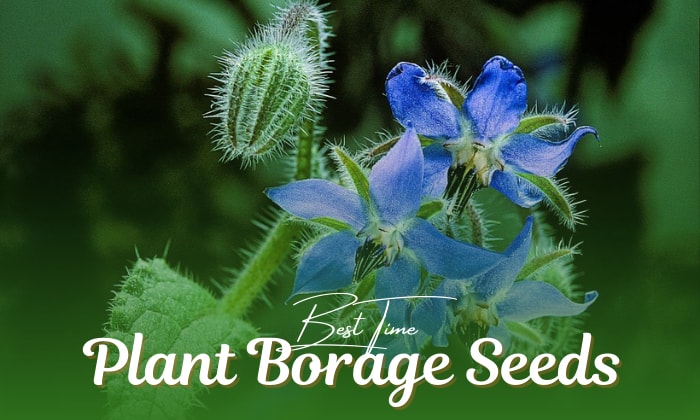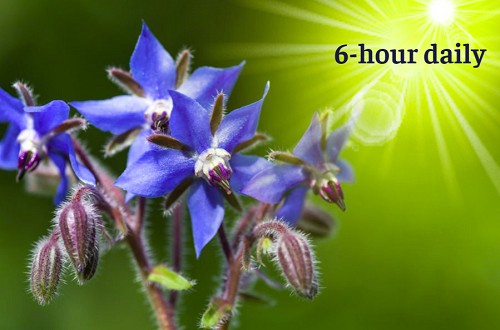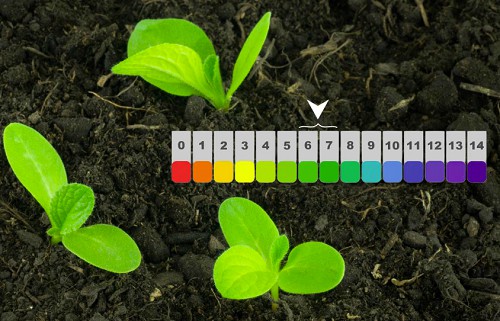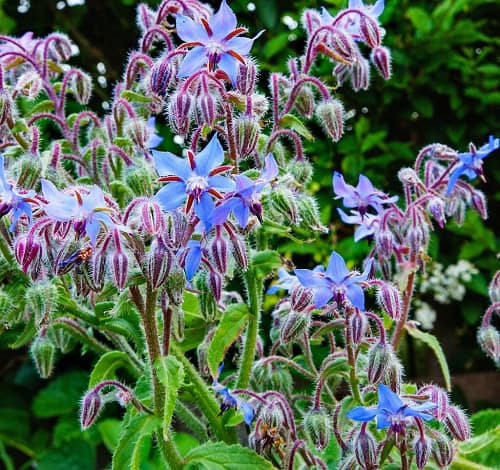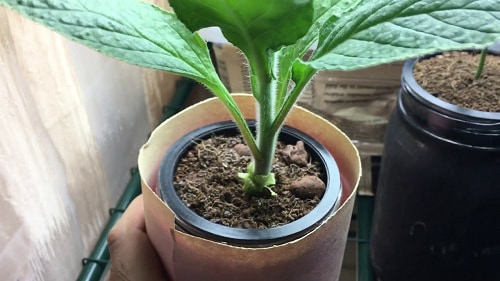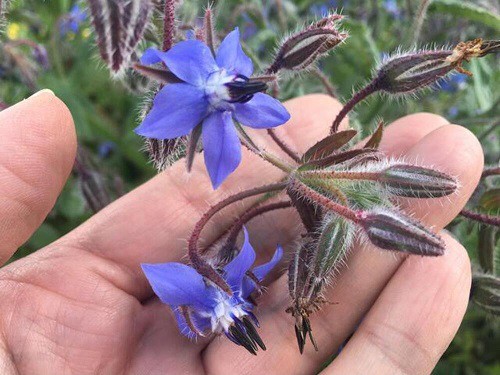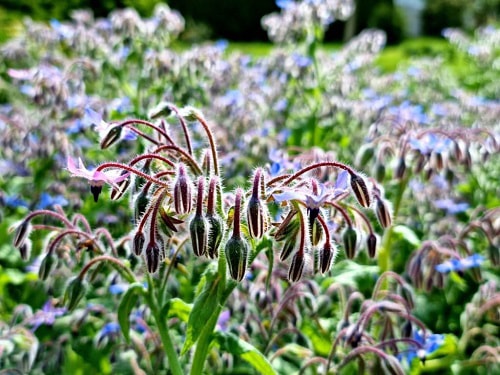When and how to plant borage seeds is pretty straightforward for different zones. These flowers with blue and purple hues universally grow best in early spring, from the 15th of April to the 10th of May.
Read our in-depth guide to learn more about cultivating borage, also known as starflower, which has culinary and medicinal properties.
Table of Contents
Best Time to Plant Borage Seeds
Borage is a flower well-suited for USDA hardy zones 2 to 11.
The ideal time to sow borage seeds in the garden is when the ground has warmed with no chance of frost. This is generally in the first part of spring, from mid-April to early May.
If you’re planting indoors, you can start sowing borage seeds in pots at least 3-4 weeks before spring’s last frost, then transplant them outdoors when the ground has thawed off, and the seedlings have adjusted to the growing conditions outside.
Borage is a plant that takes more or less 8 weeks to reach full maturation. With this, you can plant well into summer as long as there’s still an allowance of 8 weeks before the first frost sets in. Therefore, the latest you can plant is at the beginning of July.
Borage Seeds Planting Guide
Borage may be a versatile flowering herb, but it won’t survive just about anything, so making sure you’ve got the essentials for borage cultivation is key to successfully growing them.
1. Choosing a Planting Site
If you’re growing borage from seed outdoors, the sun requirements of borage make it perfect for a whole day in the sun but a partial shade is also optional as long as the 6-hour daily minimum is met.
2. Preparing the Soil
Living up to its versatility, borage can survive in many different soil conditions, including those that are dry and lacking in nutrients. Despite this, borage does best in soil that is well-draining and sufficiently moist.
Regarding pH levels, borage likes soil on the acidic side of the scale. However, it can tolerate ranges from 4.5 to 8.5, with the perfect number between 6.0 to 7.0. If your soil is not quite there yet, you can add rich organic matter for a much-needed boost.
Before we proceed with planting, ensure the soil bed is free from weeds and stones that can obstruct growth.
Planting Outdoors
Contrary to what many people think, you no longer need to soak borage seeds before planting or any specific treatment, for that matter. You can immediately proceed to sow them either outdoors or in containers inside.
Make sure to sow the seeds with 18-24 cm space apart and ¼-½ in. deep into the soil. This spacing will help you avoid detangling the plants much later, which also increases the risk of injuring the taproots that will leave you no choice but to transplant.
Top it off with more soil and let it germinate. Borage germination time takes about a week or two. When the borage plant size has reached a height of 6-8 in. you can start thinning the sprouts.
Planting Indoors and Transplanting
If you want to start sowing your borage seeds before the ground thaws, you can opt for indoor planting. Just remember to use a container with a minimum of 12 in. in both width and depth since borage can grow up to 3 feet, especially with the long taproots.
Another thing to note is because of the long roots, borage seedlings transplant poorly, so you might be better off waiting for the best time so you can plant it outside.
Caring for Borage
Water
Borage thrives in moist conditions so make sure to water it every 3 – 4 days. You want moisture but don’t let the ground get waterlogged. However, if you’re watering the seeds in containers, you might have to water them every day, especially during summer dry spells.
Fertilizer
For their fertilizer needs, plants grown outdoors don’t need any unless they’re growing on nutrient-deficient soil. In that case, fertilize them every spring, same with indoor borage. A generic fertilizer is acceptable in this case.
Tips for Planting Borage
Here are some borage care insights that you’re going to need:
- To account for the borage’s light requirements, it’s best to use a garden plot away from taller plants which can give unnecessary shade.
- To avoid disrupting their growth, water the seeds carefully with a fine-spray hose if they’re outside or a water bottle if indoors.
- While not a general requirement, setting up stakes as additional support is ideal if you live somewhere with windy conditions.
- If you have other plants in your garden, specifically strawberries and tomatoes, plant your borage next to them to benefit from its pest-repellent and pollinator-attracting properties, as well as, more fruit yield.
Conclusion
While springtime, with its moist soil conditions, is the best answer to when and how to plant borage seeds, you’re generally safe to plant it in both hot and cool weather. The one thing you just have to avoid is hard frost or waterlogged soil.
By now, you already have an insider look into successfully growing your very own starflowers. From prepping the soil to sowing and caring for them, plus extra tricks like the best plant companions, you’ll soon have a flourishing garden.

Hi, I am William – Floridayards’ digital content creator. My job is to find answers to all your concerns with thorough research and our team’s expert advice. I will also bring you honest reviews on the best products and equipment for raising your beautiful garden. Please look forward to our work!


